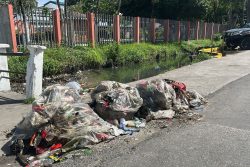Dear Editor,
Guyana recently signed an agreement with the Export-Import (Exim) Bank of the USA. This is not the first time that Guyana is doing business with an Exim Bank. Articles appearing in the Stabroek News reveal that Guyana has had a long relationship with the Exim Bank of China. Other news reports also indicate that the Exim Bank of India does business with Guyana. Possibly unknown to Guyanese, the list of Exim Banks does not stop with those countries.
Research data reveal that close to 70 other countries in the world have institutions that are described as Exim Banks or perform services like those of Exim Banks. As such, there are about 113 institutions across the globe that provide export credit services, including credit insurance and credit guarantees. Within the CARICOM family, Exim Banks can be found in Jamaica and in Trinidad and Tobago. With nearly 42 percent of countries who are members of the World Trade Organization (WTO) owning Exim Banks, one must conclude that Exim Banks have value in international trade.
One could therefore understand the euphoria of the head of Guyana’s delegation to Washington when his delegation signed the Memorandum of Understanding (MOU) giving Guyanese importers access to the funds of the Exim Bank of the USA. Not being privy to the conversations held between the US and Guyana sides recently in Washington, one must speculate as to what might have prompted the US to make funding from the Exim Bank facility available to this country. The Exim Bank of the US lives a charmed life since it is not a preferred mechanism for financing credit purchases. As useful a financing tool as it is, the USA does not want the Exim Bank to get in the way of private investors who operate such lending businesses.
Not wanting the Bank to compete with private capital, the US keeps it on a very short lease by imposing an artificial life on it. The charter by which the US Exim Bank exists is constantly reauthorized by the US Congress every four to five years and this is not an automatic process. However, the most recent reauthorization of the US Exim Bank gave it a life of seven years. With reauthorization taking place in 2019, it means that, unless renewed, the life of the Bank comes to an end in 2026. After more than 80 years of activity, it is natural to ask why the sudden interest by the US in using the Exim Bank to help Guyana buy American?
The US economy is doing well, judging from its recent jobs report. Exxon and Hess, two US companies with prominence in Guyana, are not struggling and currently control about 33 percent of the income generated by the Guyana economy. That figure will rise as oil output expands. Others might have different views, but for this writer, three things come to mind as to the reason the Exim Bank is now part of the import financing fabric of Guyana. The first reason is economic. The purchasing power of Guyana has risen nearly threefold in absolute terms since the production of oil started in 2019. The purchasing power is expected to climb significantly higher in future years if inflation and exchange rate adjustments do not hold it in check.
All Exim Banks are biased lenders and one has to assume that the USA has no intention of passing up opportunities for doing business, especially with customers that have the capacity to repay loans. Guyana’s tax revenues from oil indicate that repaying loans should not be a difficult task. Moreover, the USA believes in export-led growth and is clearly quite prepared to extend credit to its global customers to rev-up this engine of growth and employment in its own economy. Further, access to US products and its market is particularly important to Guyana since the US is its largest trading partner.
More than 80 percent of Guyana’s imports is used in its production process. If it cannot take advantage of good quality technologies and inputs, Guyana’s exports will struggle to remain competitive. The second reason might be political. The US utilizes its Exim Bank as a development tool. A declared goal of the Bank is “to stimulate the economic development of countries in the developing world by improving their access to credit for the importation of United States products and services for developmental purposes”. Judging from this goal in the charter, Guyana can use US Exim Bank funds to access imports to be used not only in inventory production, but also in capital works, including infrastructure projects. This is where the availability of US Exim Bank funds becomes interesting.
By entering the Guyana market, the US Exim Bank becomes a competitor of the Exim Banks of China and India. Projects which seem to go easily to one of these funds must now reckon with a US$2B pot of money and other financial instruments. Before the US$2B was available, it was easy for the administration to justify submitting projects to China or India for funding or accepting offers from those countries for that purpose. With the US fund joining the credit supply pool, the alternatives expand and make it more difficult for the Government of Guyana to automatically grant an income-generating or profit-making project to China or India without a more competitive procurement process.
Blunting this kind of bias in the procurement process is not speculative because a clear objective of the US Exim Bank is to “neutralize the predatory financing engaged in by many nations whose exports compete with United States exports, and thereby restore export competition to a market basis”. While this writer is not attributing predatory behaviour to lending by China or India, it must be pointed out that this accusation has been leveled against China by others. Comments at the time of reauthorization of the US Exim Bank in 2019 were directed at China and its growing global influence. So, it is not hard to believe that China was on the mind of the USA when the MOU about Exim’s funding came up.
The third reason is related to the second one. The involvement of the US Exim Bank in project financing gives it a direct interest in our procurement process. With a direct interest in the procurement process in Guyana, the US Exim Bank is authorized to investigate allegations of fraud or corruption connected to assistance given by the Bank. The sophisticated way the US pursues its interest might lead many to believe that it was not alarmed by the Vice News story about Guyana being for sale. The story was clear and if anyone does not believe that the US studies projects in markets of interest to determine if contract prices make sense or not, they are fooling themselves.
The US Exim Bank is required to have these studies done for a variety of reasons, among which is to ensure that they are not facing unfair competition. This writer would not be surprised if the Vice News story did not trigger such studies already. Beyond that, the US Exim’s presence in Guyana might have another unintended consequence which the PPP/C might not like. By having a way to reach into the procurement process in Guyana, the Exim Bank’s presence might also be opening the door for those Guyanese bidders who tend to be marginalized by current practice in the procurement process.
Unwittingly, the PPP/C now finds itself in a straitjacket with the entry of the US Exim Bank into Guyana’s financing market. For some of us, we say, in God we trust, and God is watching from a distance. Therefore, Guyanese should not be surprised if a certain high official in the government quietly slinks away from major procurement decisions.
Sincerely,
Joshua Luke









